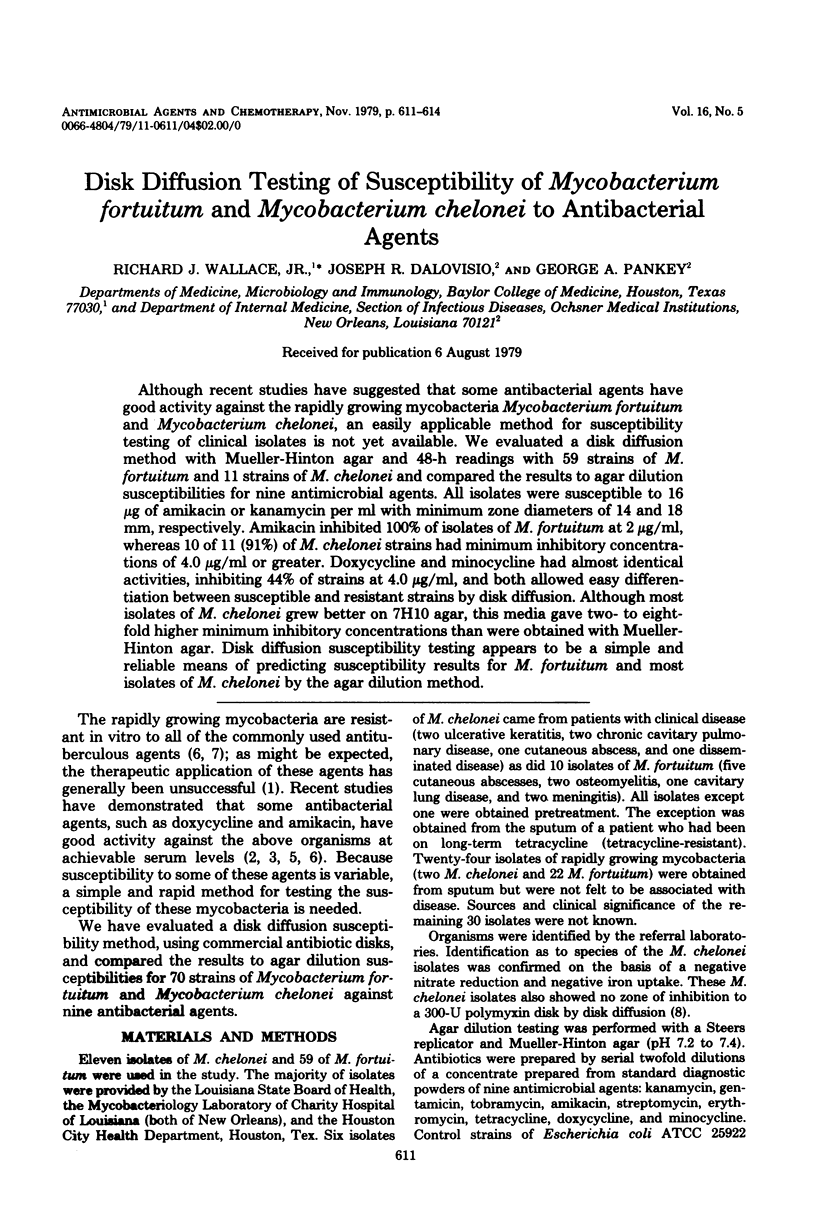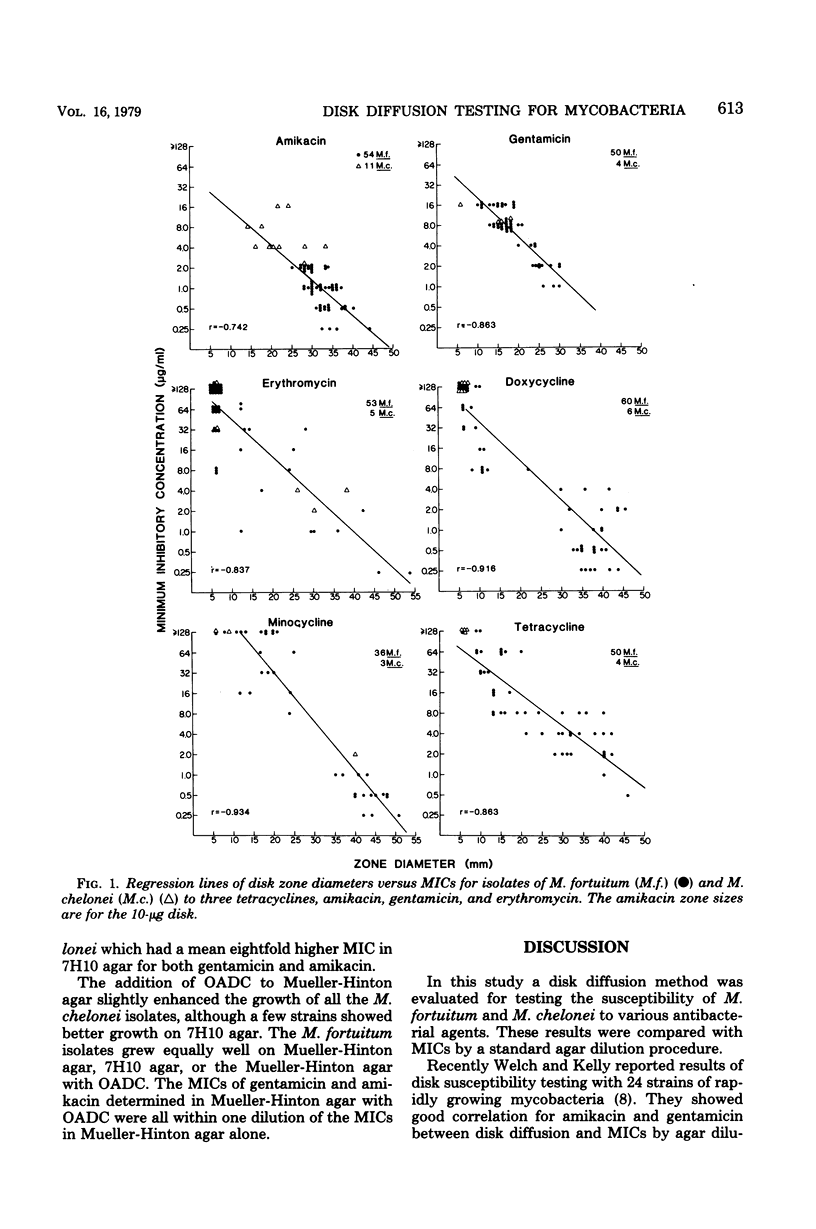Abstract
Although recent studies have suggested that some antibacterial agents have good activity against the rapidly growing mycobacteria Mycobacterium fortuitum and Mycobacterium chelonei, an easily applicable method for susceptibility testing of clinical isolates is not yet available. We evaluated a disk diffusion method with Mueller-Hinton agar and 48-h readings with 59 strains of M. fortuitum and 11 strains of M. chelonei and compared the results to agar dilution susceptibilities for nine antimicrobial agents. All isolates were susceptible to 16 micrograms of amikacin or kanamycin per ml with minimum zone diameters of 14 and 18 mm, respectively. Amikacin inhibited 100% of isolates of M. fortuitum at 2 micrograms/ml, whereas 10 of 11 (91%) of M. chelonei strains had minimum inhibitory concentrations of 4.0 micrograms/ml or greater. Doxycycline and minocycline had almost identical activities, inhibiting 44% of strains at 4.0 micrograms/ml, and both allowed easy differentiation between susceptible and resistant strains by disk diffusion. Although most isolates of M. chelonei grew better on 7H10 agar, this media gave two- to eight-fold higher minimum inhibitory concentrations than were obtained with Mueller-Hinton agar. Disk diffusion susceptibility testing appears to be a simple and reliable means of predicting susceptibility results for M. fortuitum and most isolates of M. chelonei by the agar dilution method.
Full text
PDF



Selected References
These references are in PubMed. This may not be the complete list of references from this article.
- Awe R. J., Gangadharam P. R., Jenkins D. E. Clinical significance of Mycobacterium fortuitum infections in pulmonary disease. Am Rev Respir Dis. 1973 Nov;108(5):1230–1234. doi: 10.1164/arrd.1973.108.5.1230. [DOI] [PubMed] [Google Scholar]
- Dalovisio J. R., Pankey G. A. In vitro susceptiiblity of Mycobacterium fortuitum and Mycobacterium chelonei to amikacin. J Infect Dis. 1978 Mar;137(3):318–321. doi: 10.1093/infdis/137.3.318. [DOI] [PubMed] [Google Scholar]
- Garcia-Rodriguez J. A., Martin-Luengo F. Activity of amikacin, erythromycin and doxycyline against Mycobacterium chelonei and Mycobacterium fortuitum. Tubercle. 1978 Dec;59(4):277–280. doi: 10.1016/0041-3879(78)90005-3. [DOI] [PubMed] [Google Scholar]
- Molavi A., Weinstein L. In-vitro activity of erythromycin against atypical mycobacteria. J Infect Dis. 1971 Feb;123(2):216–219. doi: 10.1093/infdis/123.2.216. [DOI] [PubMed] [Google Scholar]
- Sanders W. E., Jr, Hartwig E. C., Schneider N. J., Cacciatore R., Valdez H. Susceptibility of organisms in the Mycobacterium fortuitum complex to antituberculous and other antimicrobial agents. Antimicrob Agents Chemother. 1977 Aug;12(2):295–297. doi: 10.1128/aac.12.2.295. [DOI] [PMC free article] [PubMed] [Google Scholar]
- Welch D. F., Kelly M. T. Antimicrobial susceptibility testing of Mycobacterium fortuitum complex. Antimicrob Agents Chemother. 1979 Jun;15(6):754–757. doi: 10.1128/aac.15.6.754. [DOI] [PMC free article] [PubMed] [Google Scholar]


